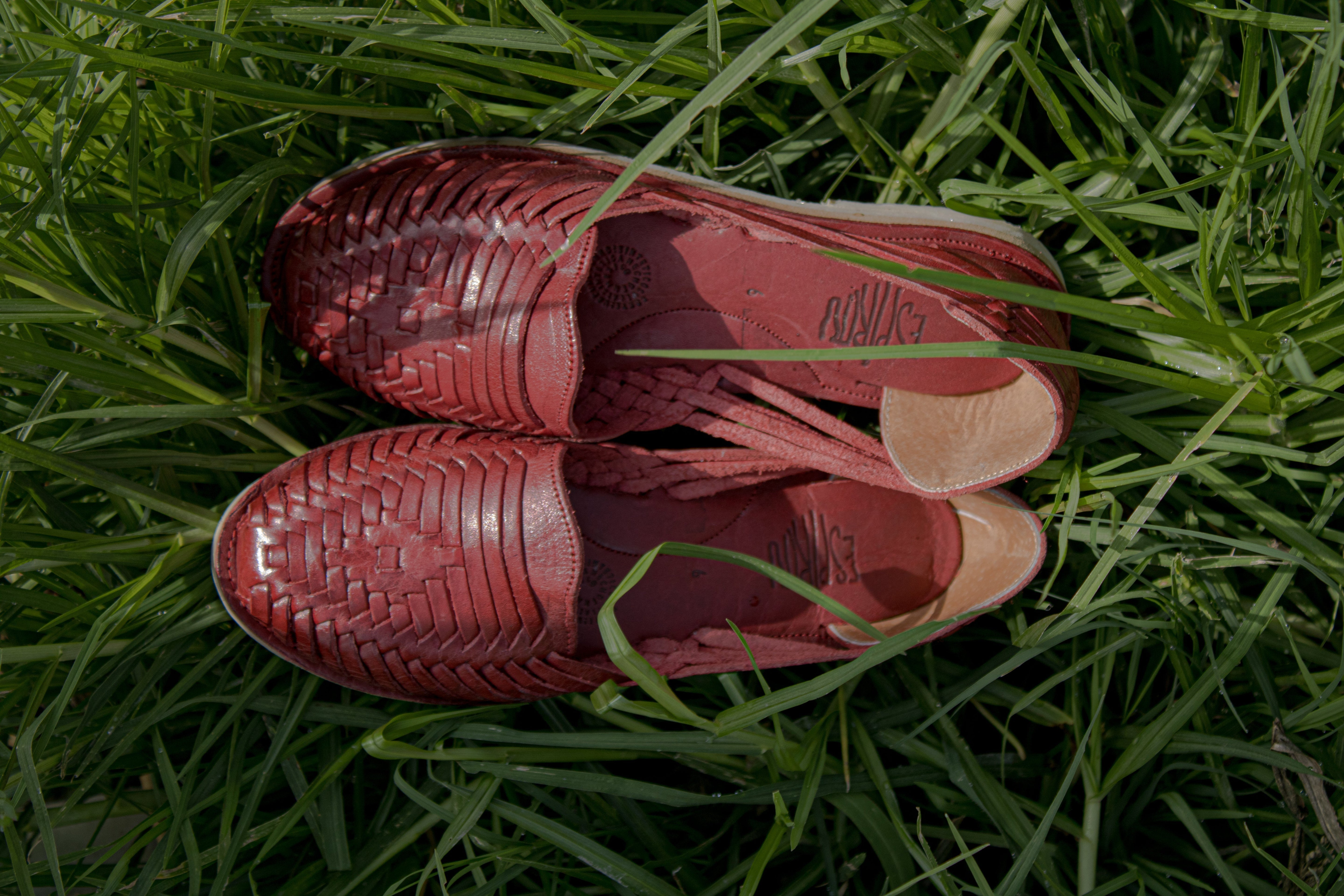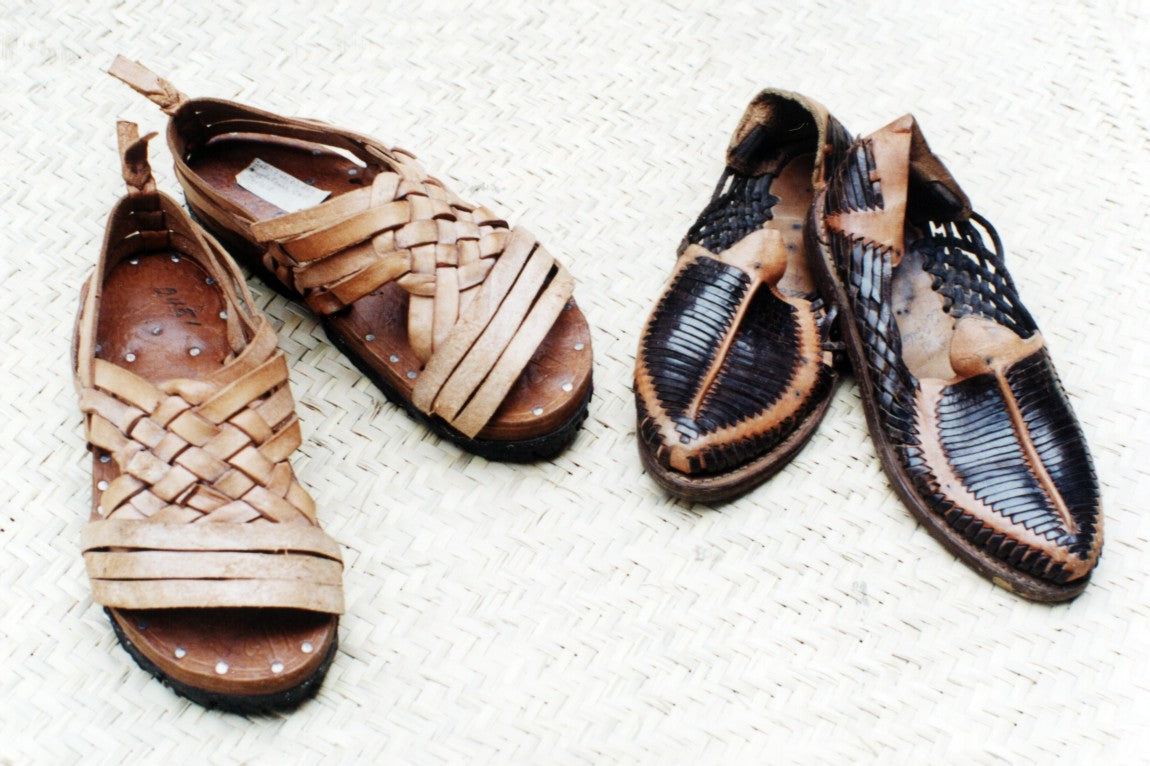Article: Huarache Care 101: Break-In, Cleaning & Longevity Tips Straight from Mexican Artisans

Huarache Care 101: Break-In, Cleaning & Longevity Tips Straight from Mexican Artisans
Leather huaraches are famously comfortable—once they’ve moulded to your feet. Skip the blisters (and landfill waste) with these artisan-approved tips on breaking in, cleaning, conditioning, and resoling your pair.
1. Why Proper Care Matters
- Comfort: Soft, nourished leather flexes with every step.
- Sustainability: The carbon footprint of a shoe drops by up to 65 % when you double its life through repairs and care.
- Savings: Resoling a quality huarache costs roughly one-third the price of new sandals.
2. Your Huarache Care Toolkit
| Item | Why you need it |
|---|---|
| Soft horse-hair brush | Removes dust without scratching leather |
| Micro-fibre cloth | For balm application & buffing |
| Mild castile soap | Cleans rubber soles & insoles |
| Saddle Soap Paste | Restores oils lost to sun & sweat |
| Cedar shoe trees | Maintain shape off-season |
| Rubber outsole kit or cobbler voucher | For resoling after ~2 years of heavy wear |
3. The Break-In Blueprint
| Day | What to do | Goal |
|---|---|---|
| 1–2 | Wear indoors 1 h at a time | Identify pinch points |
| 3–4 | Lightly mist inside weave, wear with damp socks for 30 min | Accelerate flex |
| 5–7 | Apply thin layer of leather balm; wear out on short errands | Soften & mould |
| 8+ | Normal use | Full comfort achieved |
Pro tip: Never soak the sandal; excess water can warp vegetable-tanned leather.
4. Cleaning & Conditioning
A. Quick Clean (every 2–3 wears)
- Dry-brush dust.
- Wipe the leather with a barely damp cloth.
- Spot-clean soles with castile soap and a toothbrush (keep soap off leather).
B. Deep Condition (monthly)
- Warm a pea-sized dab of Saddle soap paste between fingers.
- Massage into straps in small circles.
- Let absorb 20 minutes; buff to a soft sheen.
Regular balm not only revives color—it prevents cracking, extending life by years.
5. Weather & Water Protection
- Light drizzle is fine; blot dry ASAP.
- For heavy rain or beach days, pre-treat with a plant-based waterproof spray safe for veg-tanned leather.
- Avoid: salt-water soak, direct heater drying, or petroleum sprays that block breathability.
6. Resoling & Repairs
| Sign it’s time | Typical timeline |
|---|---|
| Tread worn smooth | 12–24 months of daily wear |
| Heel feels “thin” | ≈ 400 km walking distance |
| Small weave tear | Address early—easier to restitch |
Espíritu Resole Program: Mail us your pair → our partner cobbler stitches on a new crepe-rubber sole → returns to you within 10 days. Keep the upper, cut 9 kg CO₂ vs. buying new.
Book My Resole: Email us at customerservice@espiritu.com
7. Off-Season Storage
- Clean & condition.
- Stuff with acid-free paper or cedar shoe trees.
- Store in a breathable cotton bag, away from direct heat.
- Skip plastic boxes—leather needs air.
FAQ
How long does the break-in take?
Most people reach slipper-soft comfort in 3–7 wears, depending on arch height and humidity.
Can I wear huaraches in the rain?
Brief splashes are fine; blot dry and re-condition. For downpours, treat with waterproof spray first.
My leather darkened after conditioning—is that normal?
Yes. Veg-tanned leather deepens half to one shade when nourished; the patina evens out after a day of wear.
How often should I apply balm?
Monthly in dry climates; every two months in humid regions or if lightly worn.
Where can I resole outside Mexico/USA?
Any cobbler who works on Goodyear-welted shoes can stitch a new flat sole. Print our PDF resole guide—or use our mail-in program.
Do you offer vegan huaraches?
We’re prototyping a cactus-based leather alternative. Join the waitlist on our product page.







